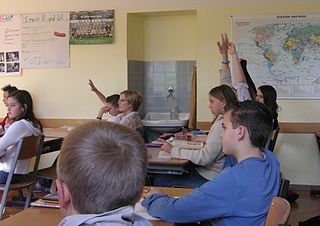Perhaps part of what makes restorative practices so effective is that these practices embody a variety of approaches to behavior change.
These approaches markedly contrast with what many media outlets have served the public in 2015; numerous news reports, that highlighted the use of physical force and sometimes violence in schools, dominated the public’s attention on school behavior management. Some examples of these stories can be found here and here.
 Although these news stories highlighted legitimate school behavioral management concerns, they provide little in way of explaining how behavior change could function in school settings. They framed behavior change as a choice; that is, students might logically choose not to engage in these behaviors again because of harsh consequences (this is a part of the theory of reasoned action). They stressed the use of power to force behavior change. Ultimately, they provided little incentive for readers to consider engaging in empathy, understanding, or compassion for all people involved, so that readers might develop a more comprehensive understanding of behavior change.
Although these news stories highlighted legitimate school behavioral management concerns, they provide little in way of explaining how behavior change could function in school settings. They framed behavior change as a choice; that is, students might logically choose not to engage in these behaviors again because of harsh consequences (this is a part of the theory of reasoned action). They stressed the use of power to force behavior change. Ultimately, they provided little incentive for readers to consider engaging in empathy, understanding, or compassion for all people involved, so that readers might develop a more comprehensive understanding of behavior change.
Given the limited discussion, I’m concerned that the public might put pressure on schools to adopt alluring “get tough, zero tolerance” or over-simplistic approaches to behavior change.
Psychologists, sociologists, and educators have clarified multiple approaches to behavior change that range in complexity. I’ve included some of them below.
- Both the transtheoretical stages of change model and behavior analytic theories of change underscore that behavior change is a process. The transtheoretical stages of change model suggests multiple stages behind behavior change: pre-contemplation, contemplation, preparation for action, action, and maintenance. The behavior analytic theories of change suggest that more complex behaviors are learned from simpler ones.
- More broadly, social learning and social cognitive-based theories suggest that behavior change is determined by environment, relational, personal components. Psychology suggests the relevance of multiple personal components including: thoughts, personal beliefs, decisions, learning processes, motivational processes, negotiation and communication processes, comprehension, empathy, cooperation processes, emotions, impression management, group processes, and the impact of stereotypes and unjust processes. Individual thoughts affect behavior and personal characteristics might influence responses from the social environment. The social environment and relationships can impact the relevance and implications of personal characteristics as well as individual behavior.
- Among sociological approaches, some highlight the role of informal and formal controls on behavior change. Informal control includes the internalization of norms and values by socialization processes. Social values, sanctions, rewards and punishment, modern media, shame, guilt, and other spatial features can be sources of informal controls on behavior change. Formal forms of control are external sanctions enforced by the government or an organizational administration.
- Some criminology approaches suggest that behavior correction requires effective methods instituted through policy. They suggest that deviant behaviors may be learned and result from reinforcers like hunger satiation, attaining a sense of competence, or meeting needs for social relationships. Effective policies should aid in the development of social controls that address these underlying issues instead of behaviors.
Restorative practices provide a platform from which educators can choose to engage with their students based on what they know about their students (see these posts for more information). And, restorative practices also provide structures that incentivize learning more about why students act the way that they do (e.g., responsive circles, proactive circles, restorative conferences) And finally, restorative practices include practices that addresses environment, relational, and personal change components (see this post for more information).








